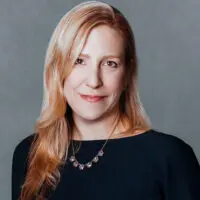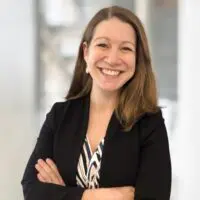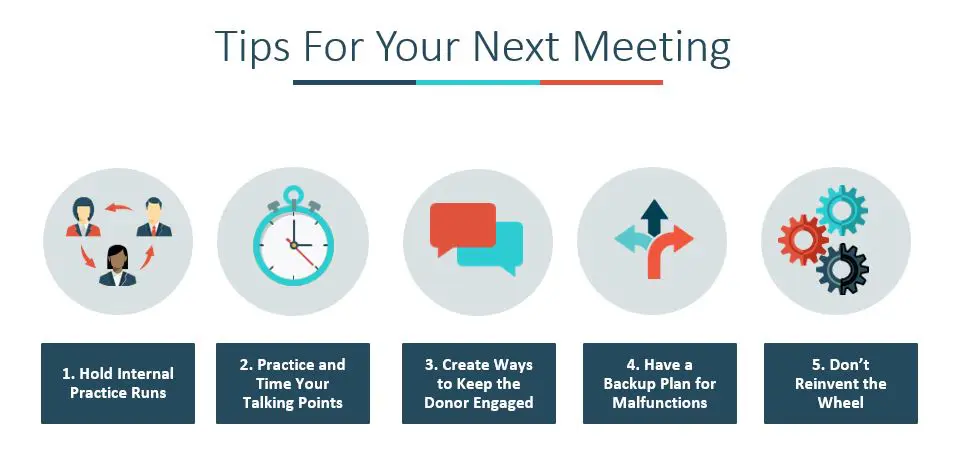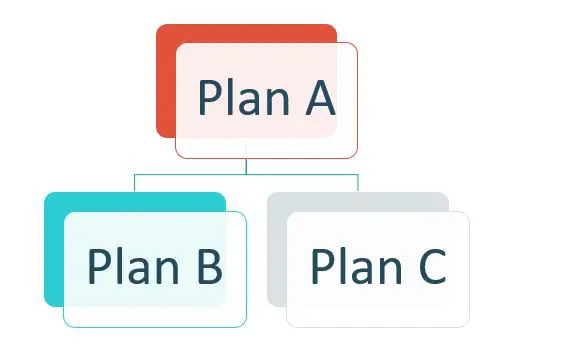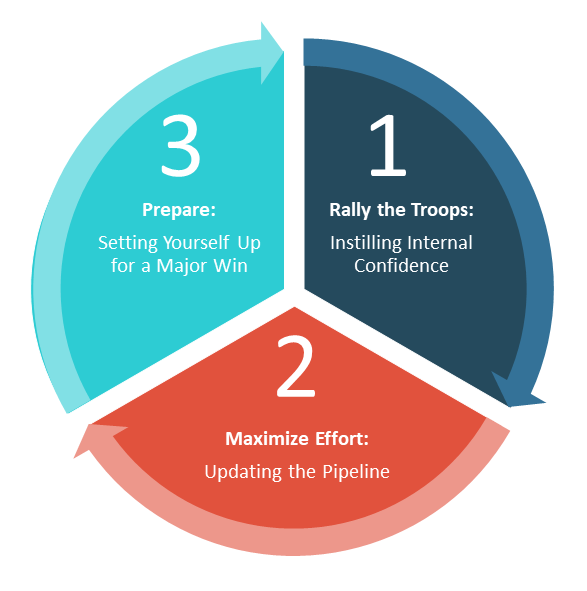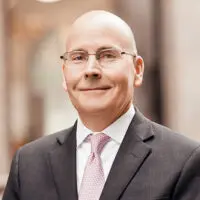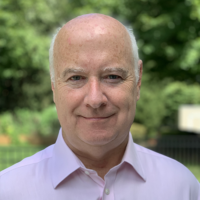Engaged and good leadership is essential to the success of a parish campaign. Leadership in a parish campaign starts with the Rector. If the Rector is supportive and involved in the fundraising plan, the likelihood of parishioner participation will increase and there is a higher chance the campaign will be successful.
Leadership is a core pillar of a successful capital campaign. The confidence inspired by a leader and their advocacy is infectious. This is not just some cliché; the importance of leadership in any organization is supported by research. A 2016 Harvard Business Review article titled, “The Trickle-Down Effect of Good (and Bad) Leadership,” demonstrated that “good leadership is contagious…and so is bad leadership.”
A Rector’s positive attitude and engagement trickles down to the vestry and trickles even further to the community. Parishioners look up to the Rector for leadership, spiritual guidance, and support. Simply stated – when the Rector is involved, others will want to be involved too. The inverse can be true of negative attitudes and lack of engagement.
However, it is not enough to show up to campaign meetings and announce you have made a gift. Leadership engagement in a campaign, and behaviors that are contagious, are inspired by something much deeper spiritually in the parish community. The two examples that follow focus on the positive influence of good, thoughtful, and mission-driven leadership on the success of capital campaigns.
Establish Early Momentum
The For All the Saints capital campaign was the first major fundraising effort for St. John’s Episcopal Church (Tallahassee, FL) since transitions in leadership and membership at the parish a decade earlier. The campaign focused on both preservation of historic buildings and construction of new facilities. During the campaign feasibility and planning study, the transitions were the top reason participants suggested a campaign could be challenging. This led to a low score for the study compared to other Episcopal parishes in terms of parishioners’ willingness to personally support the campaign. Parishioners identified a challenge and it made them hesitant to participate financially.
Despite this, the annual stewardship and planned giving programs were healthy, demonstrating that parishioners were committed to St. John’s financial wellbeing. Regardless, the Rector, the Reverend Dave Killeen, knew he had to address these hesitations. In partnership with the Rev. Killeen and the Campaign Chair, CCS developed a plan to not only reassure the parish it would be successful, but also demonstrate early success to establish momentum, raise giving sights, and validate the case for support.
The Rev. Killeen and the Campaign Chair led with conviction. At the first campaign leadership meeting two weeks into the campaign, the Rev. Killeen announced the campaign had already secured close to 25% of the goal. The campaign leaders were impressed – audible gasps and applause echoed throughout the room. They reflected on how that progress made the campaign goal feel attainable.
Volunteers were clearly inspired by the Rev. Killeen’s commitment to their success; it was contagious. They heard his stories and saw results. St. John’s went on to secure 301 gifts totaling $4,803,090, or 160% of their original $3,000,000 goal, with the engagement of 64 parish volunteers.
The plan worked. The Rev. Killeen and the Campaign Chair demonstrated the viability of the campaign. The Rev. Killeen not only attended most of the volunteer meetings, he participated in 66 requests visits. He established his expertise, reflected openly on his successes and setbacks, and demonstrated trust in the gift request process. These are leadership traits that are essential to the success of any nonprofit organization.
Be Intentional
The Built with Purpose campaign at St. Mark’s Episcopal Church (Houston, TX) was focused on retiring the debt incurred from renovations of their sanctuary. The case was compelling, not just because of the before and after pictures showcasing the impact, but because it was clear that if the debt was retired sooner, they could invest more in mission priorities. No one needed convincing.
However, the feasibility and planning study revealed that the willingness of parishioners to volunteer was lower than most Episcopal churches and the study indicated that lack of engagement could be the greatest challenge. Since parishioner-to-parishioner gift requests are a hallmark of successful parish campaigns, the Rector, the Reverend Patrick Miller, knew this had to be addressed, both for the campaign and the long-term vitality of St. Mark’s.
The Rev. Miller chose to be intentional, and engaged parishioners as volunteers who represented the diversity of his growing parish. He realized early on that this campaign would nourish and grow parish life for years to come. For example, when identifying potential volunteers, he went beyond the people who volunteer for everything. He leveraged the campaign to get new people involved and ensure multiple generations were represented. He even had a plan to engage the children and youth. In looking back, everyone was a candidate, because the Rev. Miller believed in his parish and saw this campaign as an opportunity to cement the connectedness of his community.
Another unique aspect of this campaign was that the Rev. Miller “engineered” volunteers’ success. He helped by pairing volunteers with gift requests that he knew would be successful. Specifically, he knew to match people who knew each other, but were not so close it would be uncomfortable to ask each other for money. He matched peers to peers. Volunteers were more confident when he said, “I know this request will be successful if you are involved.” The Rev. Miller understood that if each volunteer had at least one successful gift request, they would be more likely to remain engaged.
The Rev. Miller’s leadership style was intentional and built on a strong belief in the parish’s potential. He personally requested and secured just over $2,000,000 of the total funds secured. Over 40 volunteers accelerated the campaign past their goal and secured 141 gifts totaling $3,102,665. Not only could they pay off the debt early, they could fund essential mission priorities sooner than anyone had imagined.
Ensure Success
Leadership is a necessity for a successful campaign. As my colleague, Vann Ellen Mitchell, said in a recent article, leadership “engagement will make or break the campaign.” The intentionality and awareness that the Rev. Dave Killeen and the Rev. Patrick Miller demonstrated in the planning for their campaigns ensured the success, not just for the campaigns, but for their parish.
As you begin to plan your next campaign, consider these takeaways:
- Conduct a feasibility and planning study: Both parishes had completed strategic planning, but the feasibility and planning study assessed the viability of the capital campaign with the parishioners who would ultimately make an investment. The study not only validated the case and plan, but revealed challenges and opportunities that could be directly addressed early.
- Build a systematic plan focused on leadership: The campaign plan should focus on a phased approach for organization and efficiency purposes as well as creating a volunteer engagement environment that is manageable and built on the momentum of early success.
- Most importantly, ensure your Rector is deeply engaged. It is the Rector’s role to ensure the success of the campaign. Their involvement in the planning, recruitment, and gift request process is essential. Parishioners naturally look to the Rector for leadership, guidance, and support, and during a capital campaign their engagement could not be more important.
CCS Fundraising is a strategic fundraising consulting firm that partners with nonprofits for transformational change. Members of the CCS team are highly experienced and knowledgeable across sectors, disciplines, and regions. With offices throughout the United States and the world, our unique, customized approach provides each client with an embedded team member for the duration of the engagement. To access our full suite of perspectives, publications, and reports, visit our insights page. To learn more about CCS Fundraising’s suite of services, click here.
